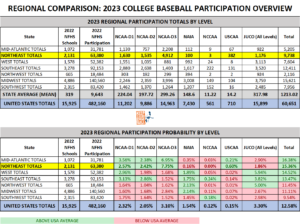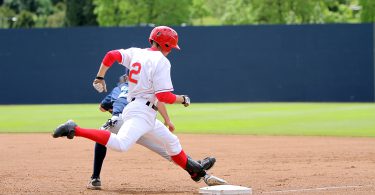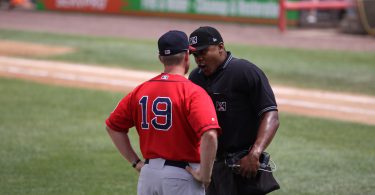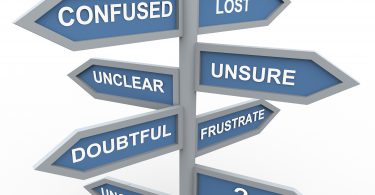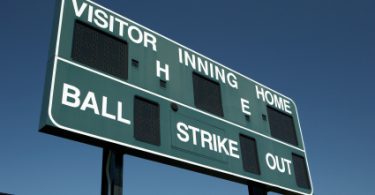You’re interested in playing college baseball, but what are your chances of making it to the next level? While many tout national probability as gospel, it turns out your odds of playing at the next level vary greatly depending on where you live.
If you live in Massachusetts and are wondering what percentage of high school graduates from your state play at each college level and where they are playing, you’ve come to the right place. In this article, we team up with our friends at College Baseball Insights to provide you with state-level overview of your chances to play at the next level.
You can see an overview of our resources, methodology, and limitations on our College Baseball Participation Overview Main Page, as well find overviews on other states and regions.
Massachusetts
In the table below, you’ll see how many high school players from Massachusetts are playing at each level of college baseball, the probability of playing at each college level, and how Massachusetts compares nationally and to other states in the Northeast Region. You can see the complete Northeast breakdown HERE.
Where Are They Playing?
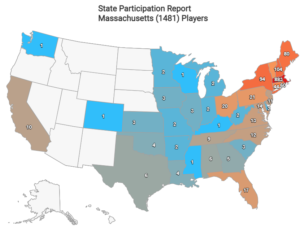
Massachusetts Players by Division (1,481)

Image and data credit: College Baseball Insights
The Breakdown
Massachusetts is another Northeastern state who, like the region in general, is above average in overall college baseball participation rate (12.63%) due in large part to a remarkably high D3 participation rate (7.53%). With 34 in-state D3 options, the 3rd most of any state, the numbers start to make sense. Even so, Massachusetts trails regional participation rates at every other major college level. D3 is the only level where it is above the national average. While D1 (2.24%) and D2 (1.41%) participation don’t trail too far behind national averages (2.32% and 2.05%, respectively), NAIA (0.20%) and JUCO (1.12%) participation percentages trail the respective 1.54% and 3.30% rates significantly. With over 1400 college players in total, Massachusetts high school grads play in every state in the entire eastern half of the United States. Unsurprisingly, most stay in the Northeast with 883 playing in their home state. In addition to the 34 D3 programs, Massachusetts is also home to 8 D1’s, 3 D2’s, and 7 JUCO’s, providing significant opportunities to in-state players who duke it out with other New Englanders for roster spots.
Want to see additional states and regional breakdowns? Find them HERE.
Limitations
This article was written with data and insights from 3rd party sources, College Baseball Insights and NFHS High School Participation Data. Data and insights are subject to revision and/or change. We’ve attempted to display as accurate a picture as possible with the information that is available. Readers should be aware that college baseball roster data is fluid and changes throughout the year. Every attempt is made to reconcile data and keep up with changes, but this article may not reflect the changes or updates from 3rd parties. Insights cannot account for gap year programs, misreported roster information, or other inaccuracies which may slightly alter the numbers and percentages used in this article. Insights are subject to change and are based on best available information.


